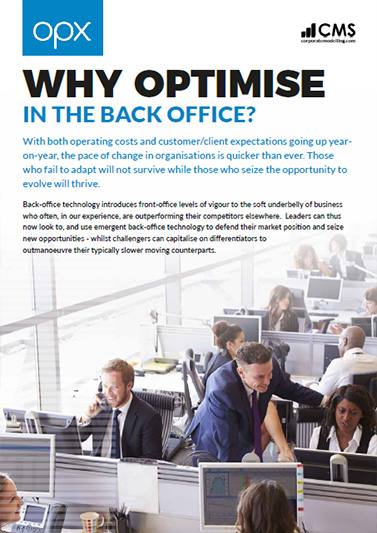Let’s start at the beginning with a few definitions.
Rightsizing is not necessarily about downsizing. Downsizing is where costs are cut; departments, products, regions or even whole country divisions are all terminated as it’s all about cutting costs, often in a period of economic, or market downturns. Whilst it’s sometimes required, it is not always the right solution, and can have long lasting and unexpected consequences for the organisation, its staff moral, and market perception.
Rightsizing is about making the whole workforce more efficient. While there may be job cuts, or changes in products, services and locations, it’s about strategic planning and streamlining operations to drive the business forward. Rightsizing may not involve any layoffs at all, just the re-organisation of the teams we have now, to be working in a more sustainable manner for the organisation.
Rightsizing the right way requires us to look at the current and expected future business requirements.
Step 1) Understand the Demand and the Demand Expectations
Before we can begin rightsizing, we need to look at the business as a set of market or customer demands, and then our ability to supply these demands using the teams we have in place.
Ideally, we get both a view of the known demand and the projected future demand for our services or goods. At Corporate Modelling when delivering OPX, our Workforce Optimisation Solution, we model the demand in short workshops using a technique called Service Diagrams (I’ll do a blog on this later). This helps organisations understand the services they provide, who consumes these services, and, just as importantly, any agreed or expected Service Levels along with an understanding of the management structures, the teams handling the demand, and the channels they are delivered through (face to face, email, chat, web etc.)
We also model the service providers. This gives everyone a great overview of what the organisation (or potentially the part being modelled) provides. This allows the business to set goals for the service deliveries. This, however, is not enough as we need to do a little bit of crystal ball projections. For this we use our Capacity Planning and projection software, using advanced forecasting algorithms from Facebook and others to get the best expected demand and seasonal variations of this demand we can.
Those clients using OPX have access to a wealth of on demand data at both high and granular levels like Product or Customer. Any organisation can also import their historic demand at whatever level they want to get this projected demand.
Step 2) Understand our teams Capacity, Skills and Utilisation
Now that we know what the expected demand is, we need to look at our existing capacity to see if we are initially over or under capacity based on the skills needed to deliver the service.
High Level Capacity
So, what do we mean? Well imagine that to process a service request we know it takes a series of four steps each with average handling times of 5 minutes, 10 minutes, 5 minutes and 20 minutes, meaning the total required FTE minutes to process this service end to end is 40 minutes. If we have 100 people with this skill, and our maximum theoretical capacity for one person working effectively is 400 working minutes per day x 100 people (minus shrinkages for absence, holidays, sickness). However, let’s say they are all available; then our total skill capacity is 40,000 minutes a day for the team of 100 people. Therefore with a 1-day Service Level our maximum throughput is 1,000 units per day before we can’t handle the demand without SLA breaches and adding new cases to the backlog.
At the high level, if we ignore the skills entirely we can easily work out if we have enough working minutes per day to handle the expected demand. However, the skills are often the key aspect here. To paraphrase, we might have enough brain surgeons and not enough theatre nurses to provide the operations we want to carry out.
Obviously, computers handle this better than humans, especially when we look at aspects like there may be different skills for each step and the activities may be handled by different teams and individual users have many skills not just one skill, and of course we don’t have a single type of demand, but many types of demand coming into a team.
The goal here is to see if theoretically we have enough people, and if we do, is this over capacity or under the capacity required to meet the demand. If we have too few people we need to plan to hire, too many we do need to consider downsizing, about right we can look at retraining. It’s obvious when you say it but much harder to work out unless you have a solution like OPX, tracking everyone’s skills at a granular level and helping with the maths.
Step 3) Understand Skills Shortages and Overages
Moving on we want to do this at Skill Level. It’s rare for us to see this balanced normally as we tend to be rich in some skills, and poor in others and, importantly, it is rare for many organisations to realise this. Skills themselves can be at a high level such as a Business Process, or at Process Activity level, or even lower at a Product Type, or actual Product or service variation. Some of our OPX customers have millions of skills identified in their organisation creating a detailed capability model.
Step 4) Understand Utilisation and Projected Utilisation
Utilisation is effectively checking how well we use the skills of the people we have as our most valuable assets are our team members. Often we don’t fully utilise what we have by ensuring they are kept busy, but not too busy which just introduces burn out and stress. We also need to ensure we are handling the right type of work, not the work that is best handled by lesser skilled, or lower cost employees – for example if you’re a subject matter expert.
In OPX we allocate cases to the known, and projected users to utilise their time where our approach is to allocate the cases with the rare skills first. This gets round the problem that John can do complex actuarial calculations and simpler change of address cases where we definitely want his doing the calculations first, and the change of address last and if the change of address capacity requires it, (for the detail planners reading this we have both forecast planning and real time planning), then in real time John may get to handle change of address before calculations for a variety of priority based factors if really needed. Using this heuristic, we can see in both real time and projected:
- What the FTE is per process per day or week
- What the FTE is per activity per day or week
- What the Skills expected are per day or week at a granular level
- Shortages of skills, overages of capacity etc.
OPX allows for team members to be allocated work from other teams automatically when they have spare capacity based on their skills and the team leaders agreement. This type of work sharing means we can use the skills in other teams when we hit peak periods in one team and not another. We also enable follow the sun case processing and shared service centres etc. All with an aim of getting the most from our teams without disruption.
Step 5) Make allowances for Succession and Rare Skills
So, once you have the data you can easily see if it’s a Rightsizing opportunity or a Downsizing opportunity. However, you should ensure that with Human Resources you take into account the demographics of the workforce to ensure you have a succession plan for rare skills such as managing a team or being a subject matter expert in a low volume, complex business process.
Step 6) Talk to Business Strategy and Product Management
It’s always worth checking that the strategic direction of the company is in line with your plan, and that products or services are not just about to be added or dropped. If it turns out that there are already plans for change, then rework the above taking into account these expected changes.
Step 7) Engage with the teams about the changes and training opportunities
With a realistic capacity plan detailing the skills of the teams and their utilisation then it’s almost certain that work needs to be re-allocated between teams, and skills need to be trained in to avoid extra overtime or rare skills shortages. The best approach is to create a Talent Growth Plan and walk through it with the managers and team leaders, using actual data, ideally gathered over a past period as it’s easier to make the point and dispel myths about peak volumes and variable demand. In our experience demand always varies and tends to be seasonal, or trending in one direction or the other. Being able to clearly explain the choices of changing working patterns, the need for re-skilling or in the worst case downsizing taking place is far better than just carrying out a plan with little explanation as to where it came from.
When is the right time to start rightsizing?
The right time is Right Now! Businesses in the modern world, especially those changing through digital initiatives, or working in changing markets, need to keep track of what the right human resources are all the time. Solutions like OPX allows for this level of granular big data information to be easily captured, and managed with little system integration, providing an ideal source of data for continual human resource planning. Every one of our customers is different, and OPX provides tailorable dashboards, reports and spreadsheets based on historic, real time and projected data about demand and human capacity to allow continual planning. OPX supports the whole process of business rightsizing.
Summary
So Rightsizing or Downsizing needs to be done the right way and hopefully you can see the Right Way is a scientific approach based on real data. Of course we should take into account that any projections may vary from reality and that’s why we recommend a continual approach to resource planning looking at the projections and plan versus actual on a continual basis. Historically, plans were done less frequently due to the complexity of creating them. However, if created daily and the variance is low from the current plan, then perhaps we ignore it, but still create the numbers every day and look to adopt a new plan when the old plan will miss the latest expected projections – or at least have it as a possibility!







 Thank you for your interest in our whitepaper. You can download Meet Our Email Bot by clicking the button below.
Thank you for your interest in our whitepaper. You can download Meet Our Email Bot by clicking the button below. Thank you for your interest in our whitepaper. You can download Why Now is the Time to Invest in Back Office Workforce Optimisation by clicking the button below.
Thank you for your interest in our whitepaper. You can download Why Now is the Time to Invest in Back Office Workforce Optimisation by clicking the button below. Thank you for your interest in our whitepaper. You can download AI Driven Forecasting for WFM & WFO by clicking the button below.
Thank you for your interest in our whitepaper. You can download AI Driven Forecasting for WFM & WFO by clicking the button below. Thank you for your interest in our whitepaper. You can download Workforce Optimisation vs Workforce Management by clicking the button below.
Thank you for your interest in our whitepaper. You can download Workforce Optimisation vs Workforce Management by clicking the button below. Thank you for your interest in our case study. You can download the HCL IBS Case Study by clicking the button below.
Thank you for your interest in our case study. You can download the HCL IBS Case Study by clicking the button below. Thank you for your interest in our case study. You can download the ReAssure Case Study by clicking the button below.
Thank you for your interest in our case study. You can download the ReAssure Case Study by clicking the button below. Thank you for your interest in our case study. You can download the Student Loans Case Study by clicking the button below.
Thank you for your interest in our case study. You can download the Student Loans Case Study by clicking the button below. Thank you for your interest in our case study. You can download the Principality Building Society Case Study by clicking the button below.
Thank you for your interest in our case study. You can download the Principality Building Society Case Study by clicking the button below. Thank you for your interest in our whitepaper. You can download WorkFlow vs WorkForce Management by clicking the button below.
Thank you for your interest in our whitepaper. You can download WorkFlow vs WorkForce Management by clicking the button below. Thank you for your interest in our whitepaper. You can download Homeworking in Financial Services Operations by clicking the button below.
Thank you for your interest in our whitepaper. You can download Homeworking in Financial Services Operations by clicking the button below. Thank you for your interest in our whitepaper. You can download Workforce Optimisation for the Back Office by clicking the button below.
Thank you for your interest in our whitepaper. You can download Workforce Optimisation for the Back Office by clicking the button below. Thank you for your interest in our whitepaper. You can download Operational Workforce Management: Build or Buy? by clicking the button below.
Thank you for your interest in our whitepaper. You can download Operational Workforce Management: Build or Buy? by clicking the button below. Thank you for your interest in our whitepaper. You can download Homeworking & Back Office Workforce Optimisation by clicking the button below.
Thank you for your interest in our whitepaper. You can download Homeworking & Back Office Workforce Optimisation by clicking the button below. Thank you for your interest in our whitepaper. You can download Why Optimise in the Back Office? by clicking the button below.
Thank you for your interest in our whitepaper. You can download Why Optimise in the Back Office? by clicking the button below.